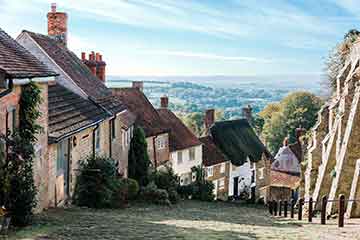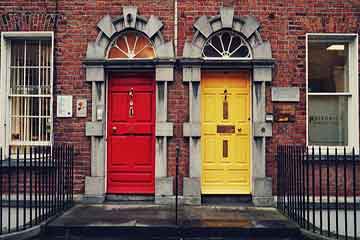The Difference Between Dry Rot and Wet Rot
What’s the difference between dry rot and wet rot?” This is one of the most asked questions when someone hears about this issue. Both are wood destroying fungi and there are certain tell-tale signs you can look after and distinguish them.
Dry rot also known as Serpula Lacrymans, is a wood destroying fungi that feeds of cellulos in timber in order to live. Normally, the process leaves timber dry and brittle.
Unlike wet rot, dry spores are capable of spreading through walls and surfaces to find new nutrients. A mushroom style fungus called sporophore will often form which will realease millions of spores in a form of red dust.
Dry rot can spread quit extensively, behind plaster and through wall materials. Even can grow through masonry it cannot feed on it.
An interesting fact is that its strands can trasnport moisture from damp areas to dry wood in unventilated conditions which allowas this fungus to spread.
- a fruit-body may be the first indication of an outbreak;
- affected timber will shrink and cracks will occur along the grain of timber;
- damp, musty smell;
- the mycelium will turn grey when older (hyphae – grey strands on timber);
- the apperance of a cotton-woll like body (mycelium);
- timber can feel soft and spongy to the touch;
- presence of red/orange-brown spore dust concentrated in patches;
- sometimes the rot affected wood may leave a surface veneer intact hiding the rot; unlike the wet rot, the moisture isnt always apparent.
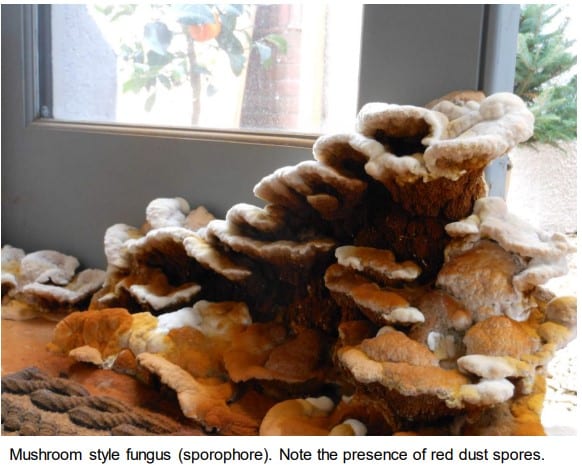
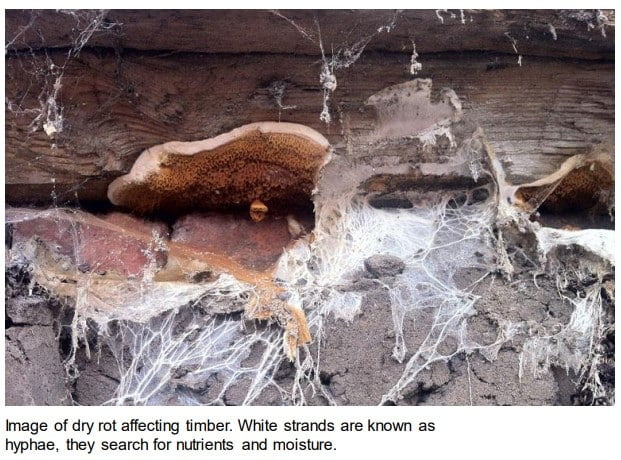

Need A Free Estimate?
- Fully qualified RICS professional surveyor
- Affordable, fast and thorough surveys
- Clear, precise and easy to understand report
- dry rot is often found in areas hidden from view, such as under floorboards or behind walls. Basically any unprotected timber in your property from ground to the roof which becomes damp is at risk;
- dry rot is caused by dampness that germinates the fungus spore on the timber;
- any area with high humidity (moisture content above 20%) and poor ventilated areas;
- timbers can become damp for different reasons, such as leaking roof, gutters, (penetrating damp) or by shower, plumbing leaks inside your property.
First thing to do is to remove the source of moisture. Then you should remove the timber that have severly decaded and replace it with a new treated timber.
Where the dry rot has passed through masonry, it should be treated with a masonry steriliser and the timber with a funigicide to ensure protecting against future rot and spread.
It is highly recommended that any type of fungus or tell tales of potential presence of it to be assessed and treated by competent specialists.
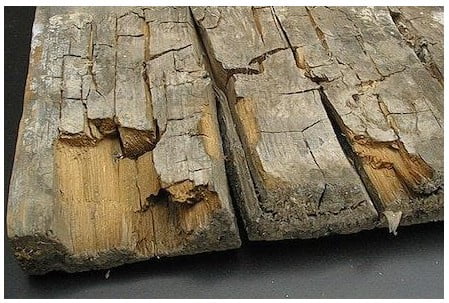
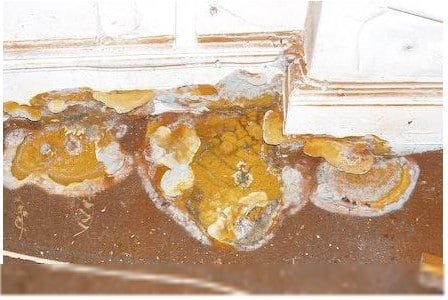
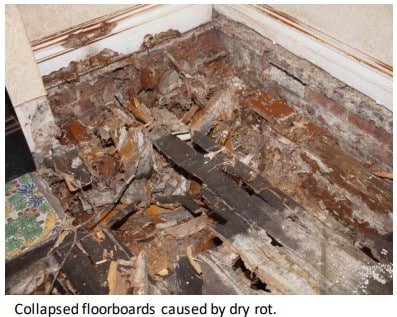
Similar to dry rot, wet rot is a wood fungus. One of the most common names for wet rot is Coniophora puteana; this type of fungal infestation thrives in damp conditions, normally in dark and poorly ventilated areas.
Wet rot can cause major structural damage to timber and compared to dry rot isn’t spreading through masonry and once the moisture is removed the wet rot will cease to grow.
Wet rot will stay in vicinity of the damp source, either is leaking pipes, rising or penetrating damp due to defective roofs, gutters or masonry pointing.
- damp, musky smell
- darkened, spongy timber
- affected timber shrinks and casuses cracking in timber
- loss of strength in timber (crumbling)
- paint finish can appear damaged, highlighting the cracked timber below
- discolouration of timber is often present
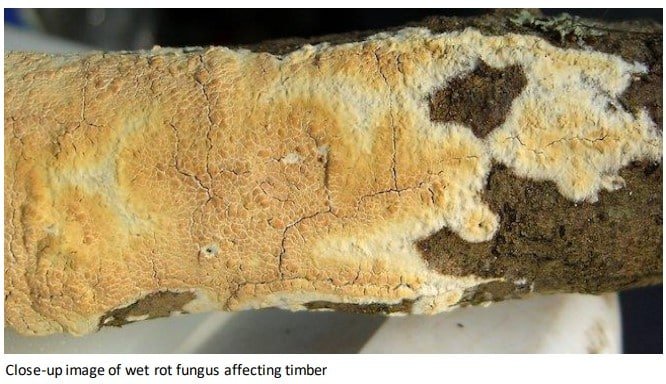
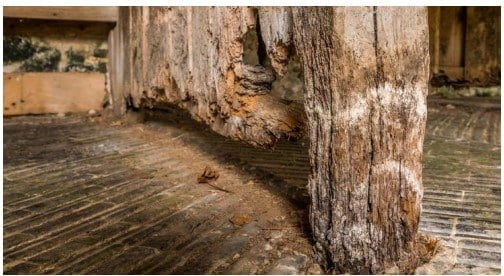
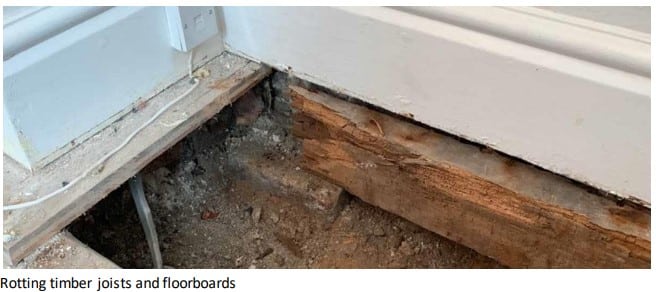
Need A Free Estimate?
- Fully qualified RICS professional surveyor
- Affordable, fast and thorough surveys
- Clear, precise and easy to understand report
- thrives in any area with high humidity and poor ventilated areas; timber with high moisture content (above 40%) is prone to wet rot;
- roof defects, blocked gutters, faulty flashings are providing the right conditions for dampness and lead to wet rot infestation around the affected areas;
- defects in walls such as deterioration of mortar in brickwork joints, faulty DPC can be another cause of dampness;
- internal defects like no DPM in the solid floor will allow water to rise through and settle into any adjacent timber;
As before, removing the source of moisture is the first step in rectification of any timber fungal, in this case wet rot. Is highly recommended to stripe as much as possible from affected area.
In some cases it may be necessary to remove entire timbers and replace through cutting back to at least 300 – 450 mm of the unaffected timber.
Where these ar eprimary structural members, this approach can be difficult to performa with additional support. Also, is worth treating with funigicide any adjacent timber to protect against future rot and to ensure further spreading.
This is the main difference between wet and dry rot:
- is due to the moisture content required for their growth: wet rot thrives on timber with a high moisture content, typically above 40%. On the other hand, dry rot can germinate at a lower moisture content, usually between 20% and 30%.
Dry rot in a building is a serious issue that needs immediate attention. It’s an aggressive and destructive form of decay that spreads from the damp source, damaging timber and other building materials.
On the other hand, wet rot fungus is more common but tends to be localized. It typically affects timber at the damp source. However, wet rot should not be underestimated. If not treated, it can lead to significant structural issues.
Dry rot is exclusively caused by the fungi Serpula Lacrymans and is the most severe form of fungal decay in buildings. It can permeate an entire building and wreak havoc on the property’s fabric. Dry rot can affect any unprotected timber that becomes damp with a moisture content exceeding 20%, a condition easily met in a property.
Both wet and dry rot can emerge due to defective internal plumbing or penetrating damp caused by faulty render, guttering, and downpipes. Both types of rot can inflict considerable damage before a homeowner realizes there’s a problem, as they can germinate behind wall fabrics and beneath floors.
Therefore, we highly recommend getting a specialist in at the first sign of dampness. Or if you are looking to buy a property, you should get a building survey as the chartered surveyor will look and assess the areas prone to poor ventilation and will use a moisture meter during his visit which will indicate any potential areas of dampness.
Written by Danil P.
7th Feb 2024 (Last updated on 10th Apr 2024)
8 minute read



